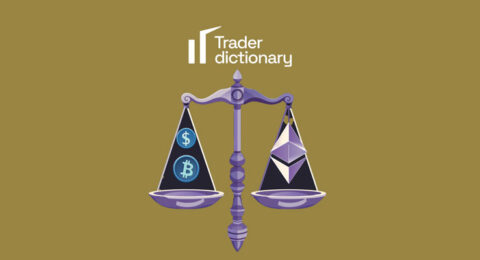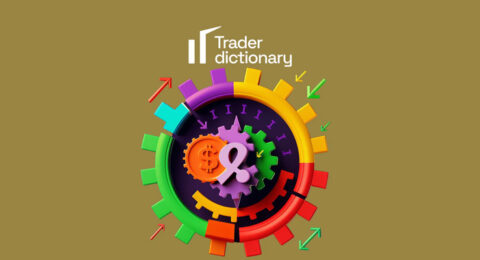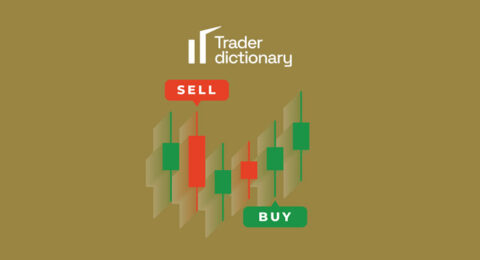When stepping into the world of Forex trading, one of the most basic and important things that any investor needs to master is an understanding of currency pairs. In this article, we will take you deep into the concept of currency pairs and how they work in the Forex market. From major pairs to minor pairs and exotic pairs, each type has its own characteristics and opportunities. Join us in exploring and understanding more about the diverse world of currency pairs so you can make smart and effective trading decisions!
What is a currency pair?
A currency pair in Forex is a combination of two different currencies, where one currency is bought and the other is sold. A currency pair is typically represented as “base currency/quote currency.” For example, in the EUR/USD pair, EUR is the base currency, and USD is the quote currency.
The base currency is the first currency quoted in a currency pair and is the currency you are buying or selling. The quote currency is the second currency in the currency pair and is used to price the base currency. The value of a currency pair indicates the amount of the quote currency needed to purchase one unit of the base currency.
Understanding how currency pairs work is very important because all trading in the Forex market is based on the buying and selling of these pairs. Each currency pair has its own characteristics and reacts differently to economic, political events, and even weather. Understanding currency pairs will help you analyze the market accurately and make smart trading decisions.
Understanding major currency pairs
What are major currency pairs?
Major currency pairs, also known as “major pairs,” are the most traded currency pairs in the Forex market. These are pairs of currencies from large and politically stable economies. I often say that if you want to start trading Forex, start with major currency pairs.
Major currency pairs
EUR/USD
For the major currency pair EUR/USD, there are several notable points that investors should pay attention to:
EUR/USD is the most popular currency pair in Forex trading, representing the relationship between the European and U.S. economies.
High liquidity: As the most traded currency pair, EUR/USD has extremely high liquidity, allowing investors to buy and sell easily without causing significant price fluctuations.
Reflects monetary policy: The volatility of EUR/USD is often closely related to the monetary policies of the European Central Bank (
ECB) and the Federal Reserve (Fed).
Influenced by economic data: Economic reports such as GDP, unemployment rates, and inflation from both the EU and the US have an impact on this currency pair.
Impacted by political events: Major political events like elections and political decisions in both the EU and the US can cause significant fluctuations in EUR/USD.
Reflects trade relations: The trade relationship between the EU and the US is also an important factor affecting the value of EUR/USD.
Relative stability: Compared to other currency pairs, EUR/USD is often less volatile due to the stability of the two major economies.
Predictability: Due to the abundance of information and analysis, investors often find it easier to predict the trends of EUR/USD compared to other currency pairs.
Political and economic risks: Although stable, the EUR/USD pair still faces risks from unforeseen political and economic factors.
Used in diverse trading strategies: Investors can use this currency pair in various trading strategies, from short-term to long-term.
USD/JPY
The major currency pair USD/JPY, reflecting the relationship between the US Dollar and the Japanese Yen, has important features such as:
Economic size and stability: USD/JPY is one of the most traded currency pairs in the world, reflecting the stability and size of the US and Japanese economies.
Influence of monetary policy: Changes in monetary policy by the US Federal Reserve (Fed) and the Bank of Japan (BoJ) often have a strong impact on the USD/JPY.
High liquidity: Being widely traded, USD/JPY has high liquidity, allowing investors to buy or sell large amounts without significantly affecting the price.
Reflects US-Japan trade relations: This currency pair also reflects the trade relationship between the US and Japan, two large economies with a deep trade connection.
Influenced by economic data: Economic data from both the US and Japan, like GDP, unemployment rates, and inflation, affect the value of USD/JPY.
Volatility during crises: In times of global economic uncertainty, the Japanese Yen is often seen as a “safe haven,” leading to significant fluctuations in USD/JPY.
Influence of interest rates: The interest rate differential between the US and Japan is also an important factor affecting this currency pair.
Responsive to global events: Any international event affecting the US or Japan, such as trade wars, can impact USD/JPY.
Suitable for short-term and long-term trading: Due to its volatility and high liquidity, USD/JPY is suitable for both short-term market watchers and long-term investors.
GBP/USD
The currency pair GBP/USD, known as “cable,” reflects the relationship between the British Pound and the US Dollar, and has features such as:
Liquidity: GBP/USD is one of the highly liquid currency pairs, allowing investors to easily buy and sell without significantly impacting the price.
Influenced by monetary policy: Changes in monetary policy by the Bank of England (BoE) and the US Federal Reserve (Fed) strongly impact GBP/USD.
Reflects UK-US economic relations: This currency pair also represents the strength and volatility of the economic relationship between these two major economies.
Impacted by political events: Major political events like Brexit, elections, and political decisions in the UK and US often cause strong fluctuations in GBP/USD.
Important economic data: Economic reports such as GDP, unemployment rates, and inflation from both countries affect the value of this currency pair.
Volatility: GBP/USD often experiences strong fluctuations, creating opportunities and challenges for investors.
Used in diverse trading strategies: This currency pair is suitable for various trading strategies, from short-term to long-term.
Responsive to global economic events: Any change in the global economic situation can affect GBP/USD.
USD/CHF
The major currency pair USD/CHF, representing the relationship between the US Dollar and the Swiss Franc, has features such as:
Stability: USD/CHF is often considered a stable currency pair, reflecting the safety of the Swiss Franc in times of economic or political instability.
Influence of monetary policy: Monetary policy decisions by the US Federal Reserve (Fed) and the Swiss National Bank (SNB
) have a strong impact on this currency pair.
Strength of the Swiss economy: The Swiss Franc is considered one of the safest currencies in the world, reflecting the strength and stability of the Swiss economy.
Liquidity: While not as high as EUR/USD or USD/JPY, USD/CHF still has sufficient liquidity to meet the trading needs of most investors.
Reflects US-Swiss relations: This currency pair not only reflects the economic situation of the two countries but also their trade and investment relationship.
Influenced by economic data: Any significant economic report from the US or Switzerland can change the value of USD/CHF.
Responsive to global events: Global economic events and market fluctuations often impact USD/CHF.
Used in various trading strategies: Investors can use this currency pair in both short-term and long-term trading strategies.
Commodity currencies
These currencies often belong to countries whose economies are based on the export of certain commodities, such as oil, gold, or agricultural products.
AUD/USD
When discussing Commodity currencies in Forex trading, the AUD/USD pair – the Australian Dollar against the US Dollar – is a prime example. Here are some notable features of this currency pair:
Linked to commodities: The AUD is often considered a “commodity currency” because its value is largely influenced by the prices of Australia’s key export commodities such as iron ore, coal, and gold.
Reflects the Australian economy: Fluctuations in AUD/USD often directly reflect the economic situation in Australia, including changes in production and commodity prices.
Influenced by monetary policy: Monetary policy decisions by the Reserve Bank of Australia (RBA) and the US Federal Reserve (Fed) have a significant impact on this currency pair.
High liquidity: AUD/USD is one of the highly liquid currency pairs, attracting investors and traders worldwide.
Responsive to economic news: Important economic data from Australia and the US, such as unemployment rates, GDP, and interest rates, strongly impact AUD/USD.
Commodity price volatility: Any significant change in global commodity prices can directly affect AUD/USD.
Risk and opportunity: Trading this currency pair brings risks due to commodity price volatility, but also opportunities for those who can capitalize on it.
Influenced by weather and natural disasters: As Australia is a major exporter of agricultural goods, weather factors and natural disasters can also affect the price of AUD/USD.
From an expert’s perspective, I find that keeping track of and understanding the factors affecting AUD/USD is key to making smart and effective investment decisions in the Forex market.
USD/CAD
USD/CAD, also known as the “Loonie,” reflects the relationship between the US Dollar and the Canadian Dollar, and has features such as:
Dependence on oil: The value of the Canadian Dollar is often directly influenced by oil prices, as Canada is one of the world’s largest oil exporters.
Influenced by monetary policy: Interest rate decisions and other monetary policies by the Bank of Canada (BoC) and the US Federal Reserve (Fed) have a strong impact on USD/CAD.
US-Canada trade relations: Changes in trade relations and policies between these two countries also significantly affect this currency pair.
High liquidity: USD/CAD is one of the highly liquid currency pairs, attracting the attention of investors and traders.
Responsive to economic news: Economic data from both countries, like GDP, consumer price index, and unemployment rates, significantly impact this currency pair.
Risk and opportunity: The volatility of oil prices opens both risks and opportunities for those trading USD/CAD.
Commodity market volatility: Any significant fluctuation in the commodity market, especially oil, can directly affect USD/CAD.
As an expert, I always emphasize the need to closely monitor economic and political factors affecting oil prices, as well as economic indicators from the US and Canada, to make effective trading decisions with USD/CAD.
NZD/USD
In the world of Commodity currency pairs, NZD/USD – New Zealand Dollar versus the US Dollar – is a unique and important currency pair. Here are the main characteristics of this pair:
Closely linked to agricultural products: NZD is often influenced by the prices of major agricultural commodities that New Zealand exports, such as milk and dairy products.
Influenced by monetary policy: Interest rate decisions and monetary policy of the Reserve Bank of New Zealand (RBNZ) significantly impact NZD/USD.
Liquidity: While not as high as EUR/USD or USD/JPY, NZD/USD still has good liquidity, enough to attract the attention of investors and traders.
Reaction to economic data: Economic reports from both New Zealand and the US, including GDP, unemployment rates, and consumer price indexes, all affect NZD/USD.
Influenced by the global commodity market: Fluctuations in the prices of agricultural commodities on the global market can cause significant changes in the value of NZD/USD.
Volatility due to weather factors: As New Zealand is an agricultural export country, weather and environmental factors can affect the value of NZD/USD.
Risk and opportunity: Trading with the NZD/USD pair brings both risks due to commodity price volatility and opportunities from accurate analysis of the agricultural market and economic policy.
Cross Currency Pairs
EUR/GBP
The cross currency pair EUR/GBP, representing the relationship between the Euro and the British Pound, is one of the widely followed pairs in the Forex market. Here are some key points to note:
Influenced by European and UK politics and economics: The EUR/GBP pair is highly sensitive to political and economic events in the European Union and the United Kingdom.
Liquidity: This currency pair has high liquidity, making it a popular choice for investors and traders.
Price volatility: EUR/GBP frequently experiences price fluctuations, reflecting changes in the relationship between these two economies.
Influenced by monetary policy: Interest rate decisions and monetary policy of the European Central Bank (ECB) and the Bank of England (BoE) have a significant impact on EUR/GBP.
Events like Brexit: Major political events like Brexit can cause strong and sudden volatility for this currency pair.
Reaction to economic news: Economic reports such as GDP, unemployment rates, and inflation from both regions affect EUR/GBP.
Risk and opportunity: The EUR/GBP pair presents both risks due to political uncertainties and opportunities from price volatility.
EUR/JPY
The cross currency pair EUR/JPY, representing the correlation between the Euro and the Japanese Yen, is an important pair in the Forex market. Here are its notable characteristics:
Liquidity: EUR/JPY is one of the highly liquid currency pairs, attracting many investors and traders.
Reflecting economic strength: This currency pair provides insights into the economic strength and monetary policy of the Euro area and Japan.
Influenced by monetary policy: Decisions of the European Central Bank (
(ECB) and the Bank of Japan (BoJ) often significantly impact EUR/JPY.
Reaction to economic data: Reports on GDP, unemployment rates, and inflation from both the Euro area and Japan affect this currency pair.
Volatility: EUR/JPY frequently experiences strong fluctuations, especially during periods of economic or political instability.
Stability of the Japanese Yen: In times of uncertainty, the Japanese Yen is often considered a “safe haven,” affecting the value of EUR/JPY.
Influenced by global events: International events like trade wars or political crises can also affect this currency pair.
Risk and opportunity: Trading with EUR/JPY brings both risks due to market volatility and opportunities from accurate analysis of economic and political factors.
EUR/CHF
The cross currency pair EUR/CHF, combining the Euro and Swiss Franc, is one of the important and unique pairs in the Forex market. Here are the main characteristics of this currency pair:
Liquidity: EUR/CHF has good liquidity, attracting the attention of both individual and institutional investors.
Influenced by monetary policy: Interest rate decisions and monetary policy of the European Central Bank (ECB) and the Swiss National Bank (SNB) often significantly impact EUR/CHF.
Stability of the Swiss Franc: The Swiss Franc is often considered a safe currency during times of economic or political instability.
Reaction to economic data: Economic reports from the Euro area and Switzerland, such as GDP, inflation, and unemployment rates, all affect EUR/CHF.
Volatility: While less volatile than other currency pairs, EUR/CHF still experiences periods of significant fluctuation due to economic and political events.
Economic relations between the Euro area and Switzerland: The trade and economic relationship between these two regions also affects the EUR/CHF currency pair.
Volatility of the Euro: Any major event affecting the Euro can also impact the value of EUR/CHF.
Risk and opportunity: Trading with EUR/CHF brings both risks due to market volatility and opportunities from accurate analysis of economic and political factors.
Factors Influencing Currency Pairs
The factors influencing currency pairs in Forex trading are diverse and complex. From an expert’s perspective, I find that understanding these factors is key to success in trading.
Central bank monetary policies: Decisions on interest rates and other monetary policies of central banks like the Fed (US), ECB (Europe), and BoJ (Japan) have a significant impact on the value of currencies.
Global economic conditions: Fluctuations in GDP, unemployment rates, and inflation are macroeconomic indicators that influence currencies.
Political and economic events: Major political events such as elections, political decisions, and economic crises can cause significant volatility for currency pairs.
Liquidity: Currency pairs with high liquidity are usually less volatile than less popular pairs, but they can still be affected by the above factors.
Commodity market volatility: For economies dependent on commodity exports like oil or gold, the prices of these commodities can directly impact currency values.
Investor sentiment: Market sentiment, strong buying or selling trends, is also an important factor affecting prices.
Impact from other financial markets: The stock market, bond market, and money market can interact and influence each other.
For a trader, continuously updating information, thoroughly analyzing these factors, and understanding how they interact with each other will help make more accurate and effective trading decisions. This requires good fundamental and technical analysis skills, as well as the ability to assess market situations quickly and accurately.
Why Do Traders Trade Major Currency Pairs?
Why do traders choose to trade major currency pairs in Forex? As an expert, I have observed and analyzed many factors that determine this choice for traders:
High liquidity: Major currency pairs like EUR/USD, USD/JPY, and GBP/USD have high liquidity, which makes buying and selling easier and minimizes the risk of slippage.
Reliability and stability: Being related to large and stable economies, major currency pairs are usually less volatile and unexpected than other pairs.
Accessible information: There is a wealth of information and analysis available related to the countries issuing major
currencies, helping traders easily analyze and make decisions.
Range of analysis: Major currency pairs allow traders to apply both technical and fundamental analysis, facilitating the development of diverse trading strategies.
Risk and opportunity: While all trading involves risk, major currency pairs usually provide a balanced trading environment between risk and profit opportunities.
Responsive to economic events: Major currency pairs often react strongly to important economic events, offering trading opportunities based on news.
Popularity in the trading community: Major currency pairs are widely used in the trading community, creating a rich network of information and experience for both new and professional traders.
Overall, choosing to trade major currency pairs is a harmonious combination of minimizing risk and maximizing profit opportunities, while also accessing a wealth of market information and analysis. This is the main reason why major currency pairs are the preferred choice of many traders globally.
Conclusion
We hope that through the article “Understanding Currency Pairs in Forex Trading,” readers have gained a deeper insight into the complex and fascinating world of the foreign exchange market. Indeed, each currency pair tells its own story, reflecting not just the economic and political situation but also the culture and history of each country. Understanding the factors that influence the value of major currency pairs not only helps investors seize opportunities but also minimizes risk in the trading process.
At connextfx.com, we are committed to providing quality and up-to-date information to support investors in their journey to explore and conquer the Forex market. We hope that with the shared knowledge and experience, readers will have additional useful tools to make smart and successful investment decisions. We wish our readers luck and success in the foreign exchange market!









